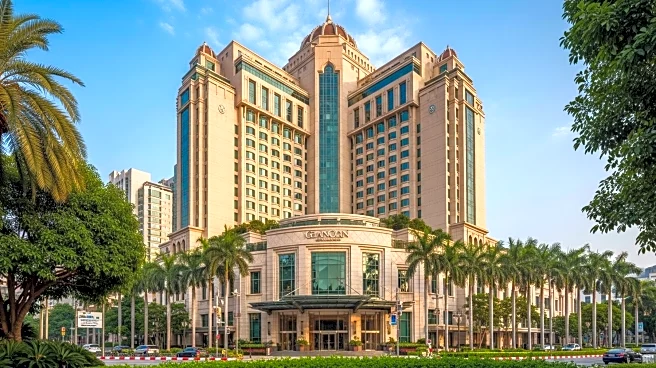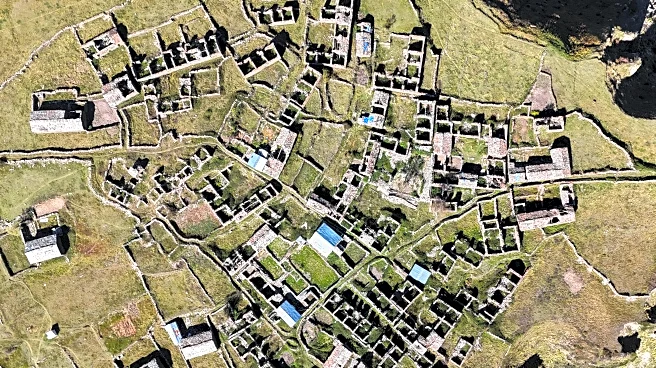What's Happening?
The Char Dham region in the Western Himalaya, India, is implementing strategic planning for sustainable tourism practices. The area, which attracts millions of pilgrims annually, faces environmental challenges
due to increased visitor numbers. Initiatives such as waste-to-energy projects and eco-park development are being launched to manage waste and promote ecological preservation. The study highlights the interaction between geospatial analysis, climate change impacts, and socioeconomic factors in sustainable tourism development. The region is also focusing on decentralizing tourism to reduce pollution and seasonality, with plans to develop satellite tourist spots and improve infrastructure.
Why It's Important?
Sustainable tourism in the Char Dham region is crucial for balancing economic benefits with ecological preservation. The initiatives aim to reduce environmental impact while supporting local communities and creating employment opportunities. By decentralizing tourism and developing infrastructure, the region can manage the overwhelming tourist influx and minimize pollution. These efforts align with global sustainable development goals, promoting responsible tourism that benefits both the environment and local economies. The approach serves as a model for other regions facing similar challenges, emphasizing the importance of integrating scientific methods and community involvement in tourism planning.
What's Next?
Future steps include implementing climate-driven disaster adaptive tourism action plans and enhancing weather forecasting mechanisms to predict extreme weather events. The region plans to develop mountaineering villages, adventure tourism destinations, and community-based responsible tourism. Infrastructure improvements, such as all-weather roads and electric vehicles, are also planned to reduce emissions and improve transportation efficiency. Continued collaboration between public and private sectors is essential to leverage resources and expertise for sustainable tourism development. Engaging local communities and stakeholders will be crucial for addressing implementation challenges and ensuring the success of these initiatives.
Beyond the Headlines
The Char Dham region's sustainable tourism efforts highlight the need for adaptive management techniques to address dynamic environmental and socioeconomic factors. The initiatives emphasize the importance of considering carrying capacity, waste management, and infrastructure adaptation in tourism planning. By promoting responsible tourism, the region can enhance visitor experiences while preserving its natural and cultural heritage. The approach also underscores the role of small and medium-sized enterprises in advancing socioeconomic well-being and conservation goals. These efforts contribute to broader sustainable development objectives, including poverty reduction, economic growth, and climate change mitigation.












